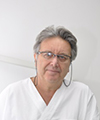
Gianni Frisardi
Orofacial Pain Centre, Italy
Title: NGF-Neuro Gnathological Functions: A new Trigeminal Electrophysiological Paradigm in masticatory rehabilitation
Biography
Biography: Gianni Frisardi
Abstract
The masticatory system should be considered a "Complex System", which is divided into a number of constituent elements bound toghether in a set of non-linear and stochastic relationships. The result of all the constituent elements determines an "Emergent Behaviour" of the system itself. The NGF Paradigm puts the excitability of the central and peripheral masticatory pathways and the network of brain connections at the centre of this complex system. To achieve this purpose it has been necessary to create a bridge between Neurophysiological Trigeminal knowledge technologies and those of Gnathology, hence the term "Neuro Gnathological Functions". Neurophysiological procedures aim to establish the presence or absence of the integrity of the neuromuscular system through the motor evoked potentials of the bilateral trigeminal roots (bRoot-MEPs) using electrical and/or magnetic transcranial stimulation methods (eTCS and mTCS). This first procedure would be able to generate a “Normalization Factor†to which to refer all trigeminal reflexes, bypassing the maximum voluntary contraction (MVC), which is too variable and unstable. In prosthetic implant rehabilitation and in patients with TMDs, however, these neurophysiological trigeminal procedures are capable of determining an intermaxillary spatial relation called “Neural Evoked Centric Relationâ€. Further, the study of trigeminal reflexes, normalized to the bRoot-MEPs represent a potential clinical support in masticatory rehabilitation procedures such as orthodontic treatment, implant prosthesis and in the differential diagnosis of Orofacial pain. Some clinical cases will be presented in order to better identify the clinical support that this paradigm could add to the dental sciences.
